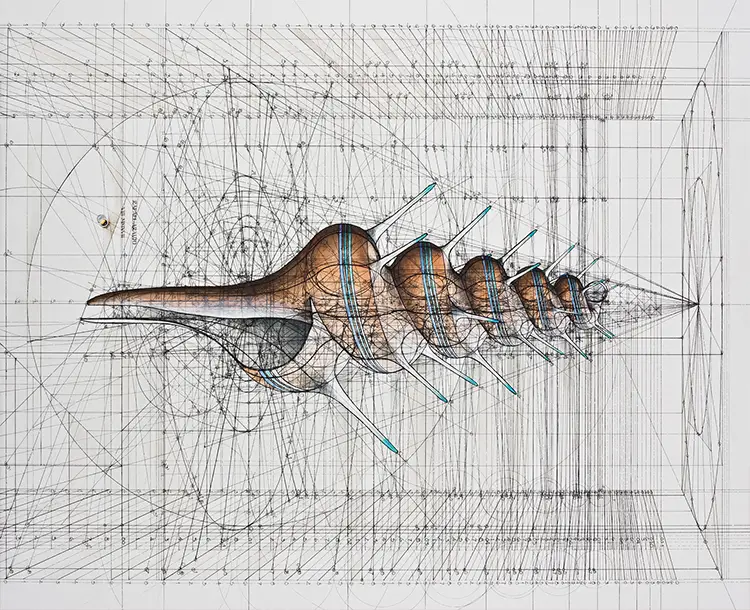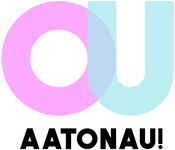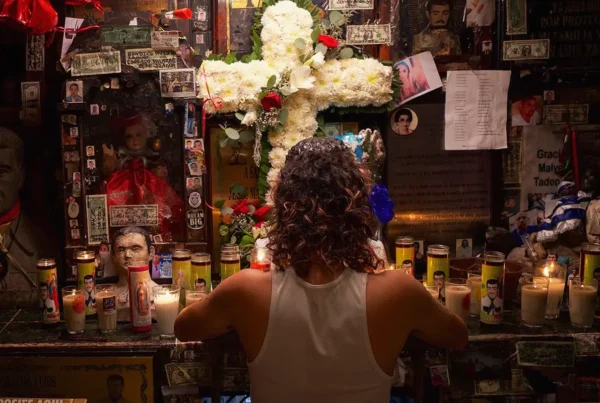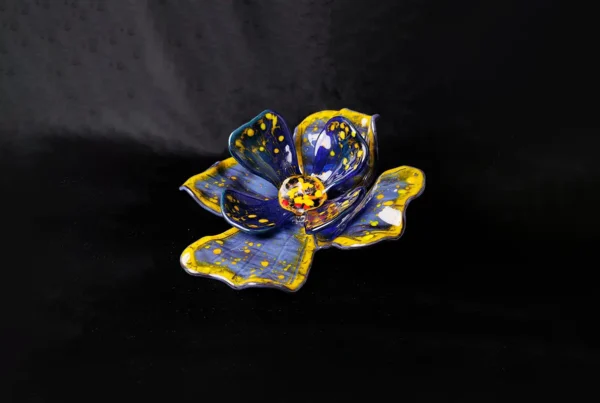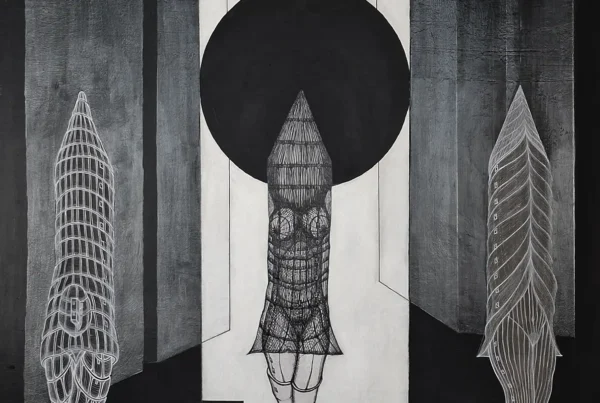Precision by Hand: Drawing Nature’s Intelligence Without Digital Aid
In an era where digital software dominates design and illustration, Venezuelan artist and trained architect Rafael Araujo chooses a radically different path—one that reclaims the analog intimacy of pen, compass, and ruler. Known for his intricate depictions of spirals, butterflies, and the mathematical coherence of natural forms, Araujo’s work offers a stunning counterpoint to the hyper-digitized art world. His illustrations, painstakingly constructed without the use of software, reveal the geometry inherent in life’s smallest details, capturing complex spatial harmonies with scientific clarity and poetic restraint. Each piece testifies to a personal commitment to accuracy, discipline, and reverence for the invisible rules that govern the physical world.
The tools of Araujo’s studio—strictly non-digital—are instruments of both art and inquiry. He employs the compass, protractor, and square with the intensity of a scientist conducting a precise experiment. These instruments aren’t symbols of resistance to modernity, but rather extensions of his deeply contemplative approach to drawing. Araujo believes manual techniques force the artist into a closer, more honest relationship with the subject. This analog process, in his view, fosters a heightened state of concentration—each line drawn by hand represents not only a deliberate act, but also a deep engagement with the structure of the natural phenomenon being rendered. The slow, methodical pace becomes a form of visual meditation, revealing the intrinsic beauty of pattern and proportion.
It’s no accident that Araujo’s artworks bear the visible scaffolding of their construction. Unlike most artists who erase the guides once a form is established, he retains every measurement and auxiliary line. These remnants are not afterthoughts but fundamental elements of the final image, revealing the architecture behind the aesthetics. For Araujo, the process is inseparable from the result: the visible geometry enhances rather than distracts. This transparency gives his work a rare sense of authenticity, where the viewer is invited not only to admire the result but to witness the process of its creation. The construction lines become part of the artwork’s integrity—proof of a disciplined pursuit of visual truth rooted in mathematics and observation.
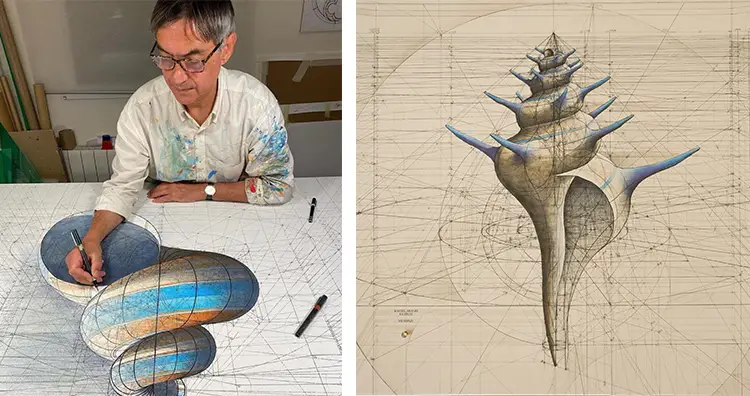
Rafael Araujo: Geometry as a Language of Discovery
At the heart of Araujo’s philosophy lies a profound conviction: geometry is not an abstract construct imposed on nature, but a native language through which nature expresses itself. From a young age, his fascination with the structure of living things drove him to explore the order hidden in chaos. At fifteen, he found himself captivated by the spirals and proportions evident in plants and insects he observed while working in his family’s Caracas garden. Though he lacked formal training at the time, this early exposure awakened an intuition for design that would shape his lifelong artistic inquiry. Geometry became not just a method for him, but a key to decoding the architecture of life itself.
That intuitive pull eventually transformed into a rigorous, self-directed education in geometry. Without the guidance of teachers or formal instruction, Araujo forged his path through a mix of trial, error, and relentless experimentation. Over decades, he refined a system for visualizing and rendering three-dimensional structures with remarkable clarity. His drawings evolved into more than visual representations—they became analog equations rendered in graphite and ink. The spiral of a shell, the trajectory of a butterfly’s flight, the proportions of a seed pod: all serve as evidence of his assertion that nature operates according to discoverable, replicable rules. In this light, his illustrations function not only as artworks but as visual demonstrations of recurring natural laws.
Araujo’s pursuit of what he refers to as “visual truth” is grounded in this desire to reveal, not invent. He insists that his work is not creative in the conventional sense; rather, it’s investigative. He doesn’t aim to stylize or dramatize the natural world, but to understand and make visible its structure. The result is a body of work that resonates both scientifically and aesthetically, appealing to mathematicians and artists alike. His precision doesn’t dilute the emotional impact of his drawings—it heightens it. The beauty arises not from embellishment but from the fidelity to what already exists, laid bare through the exacting lens of geometry.
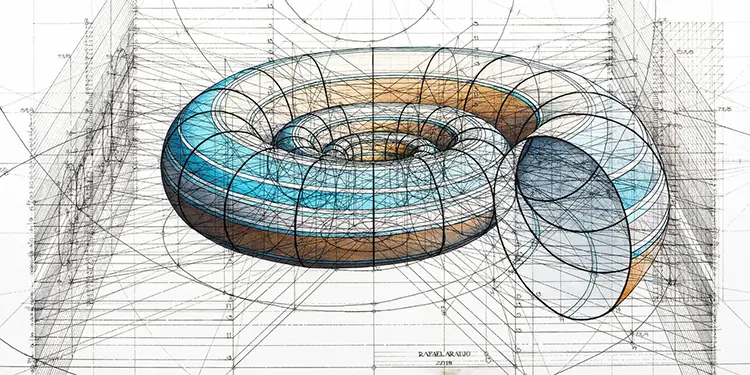
Proportions of Wonder: The Golden Ratio and Beyond
Among the many geometric principles that inform Araujo’s work, the Golden Ratio holds a place of particular significance. However, he approaches this storied proportion not as a mystical key to beauty but as a geometrically reliable tool. What draws him to the Golden Ratio is its constructibility using only classical instruments, which aligns perfectly with his hand-drawn approach. He finds immense satisfaction in executing its proportions with absolute precision, using no more than a ruler and compass. In doing so, he reaffirms the idea that harmony in design need not rely on digital templates or algorithms—it can emerge from centuries-old tools wielded with care.
Despite the allure often associated with the Golden Ratio, Araujo avoids treating it as a magical formula. He sees it as one among many possible paths to achieving harmonic balance. Depending on the subject, logarithmic spirals or alternate proportions might be more suitable. His choice of which system to use arises from the natural form he is studying, not from a desire to impose a predefined aesthetic. This flexibility demonstrates his nuanced understanding of geometry as a living practice rather than a fixed doctrine. The forms he chooses to explore dictate the geometry he employs, not the other way around. It’s a pragmatic yet poetic approach, rooted in responsiveness to the subject.
This openness to diverse proportional systems has also shaped his outreach to wider audiences. When people began asking for his illustrations as coloring templates, Araujo saw an opportunity to extend the meditative quality of his work to others. The result was the Golden Ratio Coloring Book, a collection of his signature illustrations adapted for interactive use. The book invites users to not only observe geometry but engage with it tactilely. Coloring becomes a quiet act of participation in the design of nature, echoing Araujo’s own slow, deliberate drawing process. This initiative reflects his larger mission: to awaken in others the same sense of wonder he experiences with every line drawn.
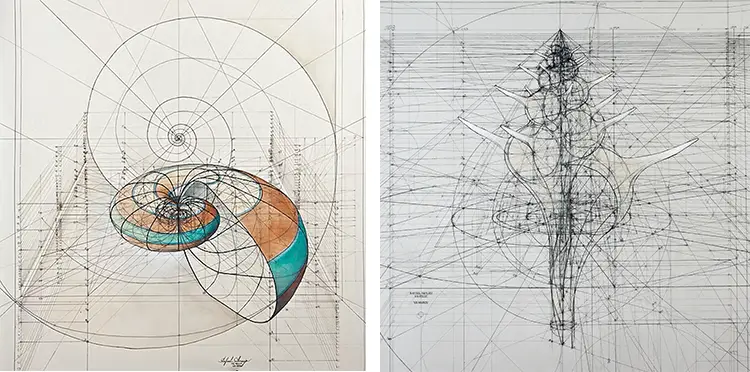
Rafael Araujo: From Analog Craft to Enduring Legacy
Over more than four decades of sustained focus, Rafael Araujo has developed a practice that is at once deeply personal and universally resonant. What began as a teenager’s curiosity in a backyard has matured into a highly disciplined artistic inquiry that bridges science and aesthetics. Today, his work stands as both a visual record and a philosophical statement. Each piece reveals not only the geometric scaffolding behind natural beauty but also the possibility of merging observation and intellect into something sublime. This synthesis positions Araujo within a long tradition of thinkers and artists who saw no divide between art and science—a lineage that includes figures like Leonardo da Vinci, with whom he is often compared.
Though he humbly resists comparisons to historical greats, Araujo acknowledges a shared commitment to manual precision, empirical curiosity, and structural understanding. What sets him apart is his refusal to separate intuition from discipline. His practice exemplifies a unity of hand, mind, and eye—a total engagement with the world through drawing. After decades of refinement, his relationship with geometry has become second nature. What once required intense calculation now flows with intuitive ease, yet never loses its sense of wonder. Each new work offers a fresh challenge, a new opportunity to explore space, proportion, and natural form with renewed intensity.
Looking ahead, Araujo remains as committed as ever to sharing the depth of his process. He is currently expanding his “Calculation” series and exploring educational formats to communicate his techniques to a broader audience. Whether through online tutorials or video demonstrations, he aims to make the methods behind his illustrations accessible to aspiring artists and geometry enthusiasts alike. Far from slowing down, he sees his work as a continuous evolution—an ongoing conversation with the structures of the natural world. The lines he draws, though fixed in graphite, suggest a movement that is still unfolding, inviting others to observe, question, and draw alongside him.
